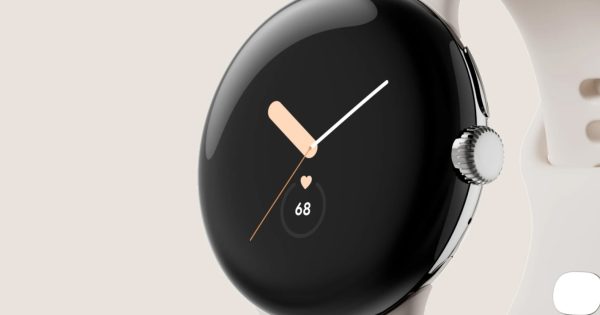There were lots of light-hearted jokes to be had after Google announced the Pixel Watch at I/O last week, mostly because rumors of such a watch’s existence have carried on for years. We actually laughed a bit when it was official, because we almost weren’t sure it was really official. It is official, by the way.
Soon after the jokes, we couldn’t help but find excitement in the unveiling. Google had finally done it – they were preparing to give us a Pixel Watch, the one Wear OS watch we feel has been missing from the ecosystem from the beginning. The design is on point. Google is tying-in Fitbit for health tracking. It looks like the perfect size. It’ll even run some new version of Wear OS that sounds like it has major improvements. Everything lined up out of the gate, even if we didn’t know the little details like specs or price.
And then just before the weekend hit, the first rumor surrounding the real Pixel Watch showed up to kill all the vibes. The crew at 9to5Google heard from sources who suggested the 2022 Pixel Watch will run a 2018 chipset from Samsung. Bro, what? Noooo.
According to this report, Google is using the Exynos 9110, a dual-core chipset first used by Samsung in the Galaxy Watch that debuted in 2018. The chip was big enough in the Samsung world that it also found its way into the Galaxy Watch Active 2 a year later and then the Galaxy Watch 3 another year after that.
The Exynos 9110 was a more than capable chip, that’s for sure. It’s a 10nm chip that powered Tizen and provided one of the better smartwatch experiences on the market. For the Galaxy Watch 3, likely thanks to the bump in RAM from Samsung, I noted in my review that the watch ran quite well and smoothly handled all of the tasks I threw at it. So what’s the problem?
It’s a chip from 2018, man. The biggest problem in the Wear OS world for most of the past 6 years has been that all devices ran ancient technology from Qualcomm and couldn’t keep up with the times, competitors, and advancements in tech. We thought we were finally moving on from that storyline with the launch of Samsung’s W920 chip in the Galaxy Watch 4 line last year and yet, here we are.
Google is reportedly using this chip because the Pixel Watch has been in-the-works for some time and there’s a chance that trying to switch to a newer chip would have further set it behind. Or maybe Samsung isn’t even willing to let anyone else use the 5nm W920 yet. Since it’s become clear that Google isn’t a fan of Qualcomm chips for devices any longer, the 12nm Wear 4100+ was likely out of the question.
The hope, at least for now, is that Google has spent a significant amount of time (like multiple years) finding out ways to get everything and then some out of this chip. Since I don’t recall seeing a Wear OS watch run the 9110, maybe we’ll all be in for a surprise. Google is pretty good at optimizing its devices with chipsets that aren’t always top tier (think Pixel 5…Pixel 6 too), so we could see that again in the Pixel Watch.
I am worried about general performance, though. Google has already said that Wear OS 3 brings big changes and issued warnings about older watches being able to run it, even those with Qualcomm’s Wear 4100 and 4100+ chips. Google explained that the upgrade from Wear OS 2 to Wear OS 3 on devices running that chip could leave the experience impacted. The Exynos 9110 is technically a more efficient chip than those.
My other worry, at least in terms of perception or the Pixel Watch’s storyline, is that it won’t matter how good Google makes it if they use the Exynos 9110. Google using a 4 year-old chipset is the type of item that writes its own headlines, and not in a good way. We’re already seeing them and the Pixel Watch is 5 months from launch.



